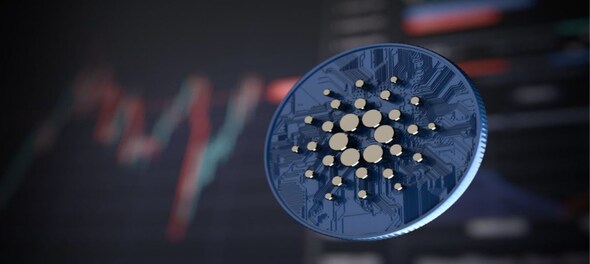
Much like the broader crypto market, 2022 was a terrible year for Cardano. ADA, the blockchain’s native cryptocurrency, dropped 83 percent on the back of a bitter crypto winter and the FTX and Terra meltdowns. Fortunately, Cardano’s roadmap for 2023 is full of exciting updates and developments that could affect a turnaround for the proof-of-stake blockchain.
One of these updates is the launch of Djed, Cardano’s first algorithmic stablecoin. The project is touted to be a game-changer for price-stable cryptocurrencies and is expected to go live on the Cardano mainnet this month. But what is Djed and how does it work? Tag along to find out.
What is DJED?
DJED is an algorithmic stablecoin pegged to the value of the US Dollar. The project was unveiled at the Cardano Summit in 2021 and is being developed by a firm called COTI in collaboration with Cardano’s lead developer, Input Output Honk Kong (IOHK). COTI is the first platform in the world that specialised in creating price-stable coins. The company will conduct all the front-end activities for DJED. And in exchange for their services, COTI will collect fees generated from the minting and burning of the stablecoin and its reserve coins (more on this later).
Also Read: Decoding the Avraham Eisenberg arrest and its impact on crypto bug bounties, white hat hackers
The goal for Djed is to become the coin with which all transaction fees on the Cardano network will be paid. This will allow for a uniform, predictable transaction cost, rather than having volatile gas fees. As such, Djed is slated to be integrated across all the 40 or so apps on the Cardano network.
The stablecoin can be used for multiple purposes including alternate banking, making regular payments, lending, remittance, and so on. Moreover, Djed operates as a decentralised bank. It is over-collateralised and is backed by a couple of tokens, one being ADA, the native token of Cardano, and the other being SHEN. Both of these tokens act as a reserve base for Djed, ensuring its price stability and peg with the US Dollar.
How does Djed work?
As mentioned earlier, Djed is an algorithmic stablecoin. This means that it employs a smart contract to maintain its peg with the S Dollar. Djed is backed by ADA, Cardano’s native cryptocurrency. Users can send ADA to the governing smart contract and receive an equivalent amount of Djed. This creates a pool of ADA that backs every Djed in circulation.
This transaction can also be reversed, with the user sending 1 Djed to the smart contract and receiving $1 worth of ADA in return. The smart contract then burns the received Djed, thereby maintaining its peg with the US Dollar.
Of course, there is always a very real possibility that ADA experiences a major drop, in which case, there might be a shortage of ADA in the contract to give back to the Djed holders. This is exactly what happened to TerraUSD (UST) in May last year when LUNA began to plummet and eventually reached $0.
To prevent such a situation, the smart contract also maintains a stockpile of SHEN, which is Djed’s reserve currency. The smart contract ensures that Djed is always 400 to 800 percent collateralised by a reserve of SHEN. This helps maintain the stablecoin’s price stability and ensures that if ADA does plummet, Djed holders can be made whole with SHEN.
Unlike Djed, which is pegged to the US Dollar, SHEN is open to volatility. This means that SHEN’s price valuation can rise or fall with market conditions. However, SHEN holders will receive a small fee every time users exchange ADA for Djed or SHEN and vice versa. This provides an incentive for users to hold onto their SHEN, ensuring price stability.
Moreover, users will not be able to burn SHEN for ADA if the reserve ratio is below 400 percent. This is because priority is given to users who want to burn Djed for ADA. On the flip side, SHEN cannot be minted if the reserve ratio exceeds 800 percent to avoid the dilution of rewards for existing SHEN holders. As such, the SHEN reserve is crucial for the working of Djed.
Djed will also have a proof-of-reserve that will allow users to verify the assets backing the stablecoin. This level of transparency is much needed given the current volatility and FUD in the market. “Recent market events have proven again that we need a safe haven from volatility, and Djed will serve as this safe haven in the Cardano network,” said COTI CEO, Shahaf Bar-Geffen. “Not only do we need a stablecoin, but we need one that is decentralised, and has on-chain proof of reserves,” said Bar-Geffen.
Conclusion
Most other stablecoins in the market are backed by a reserve of fiat currency. However, this system requires regular audits to ensure that the coin’s circulating supply is backed by an equal amount of fiat currency.
On the other hand, Djed uses a dual-token reserve to keep its peg with the US dollar. These assets are over-collateralised and mathematically verifiable, ensuring transparency and stability. According to the project’s website, “Djed is the first stablecoin protocol where stability claims are precisely and mathematically stated and proven.”
This is why Cardano enthusiasts are eagerly awaiting the launch of Djed. However, it remains to be seen how successful the project will be and whether or not its launch will have any positive effect on ADA’s price valuation.
Check out our in-depth Market Coverage, Business News & get real-time Stock Market Updates on CNBC-TV18. Also, Watch our channels CNBC-TV18, CNBC Awaaz and CNBC Bajar Live on-the-go!


Every student suicide pains me, I will try better: BJP Kota MP Om Birla
Apr 16, 2024 2:19 PM
Bihar Lok Sabha elections 2024: Schedule, total seats, Congress candidates and more
Apr 16, 2024 1:02 PM
Lok Sabha polls: BJP drops Som Parkash, fields Abhijit Das against Mamata's nephew
Apr 16, 2024 12:49 PM

